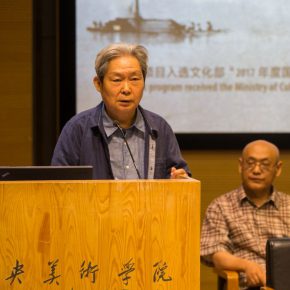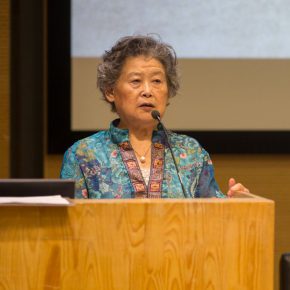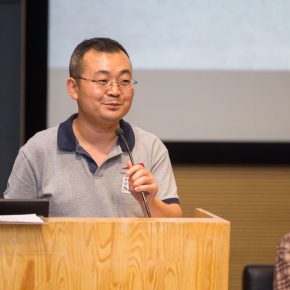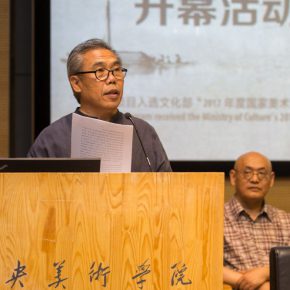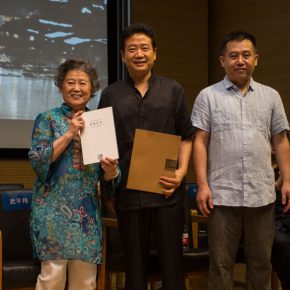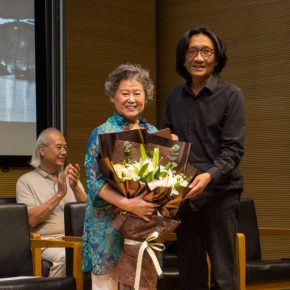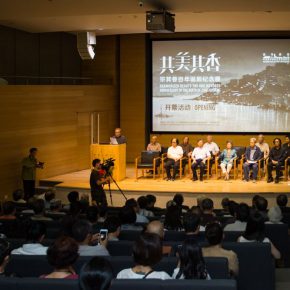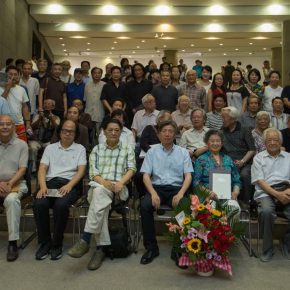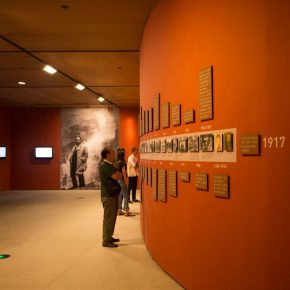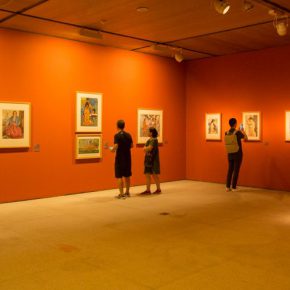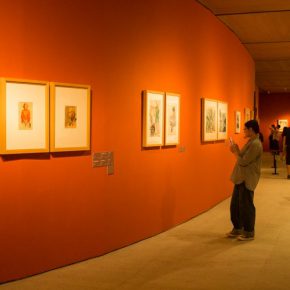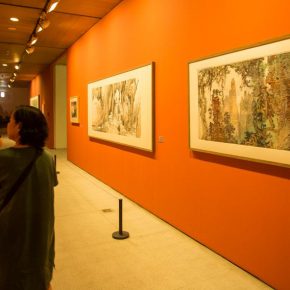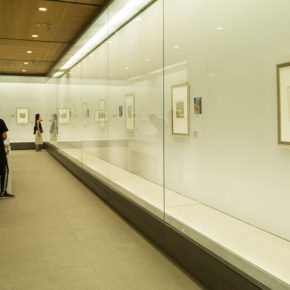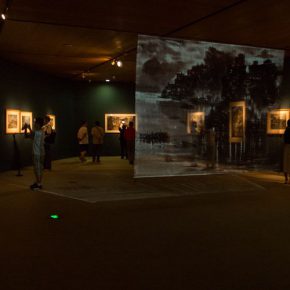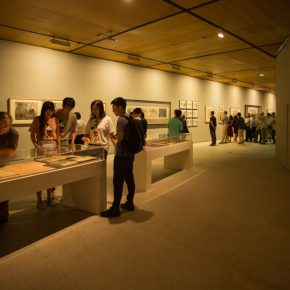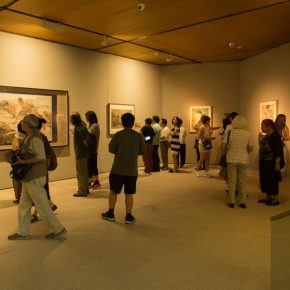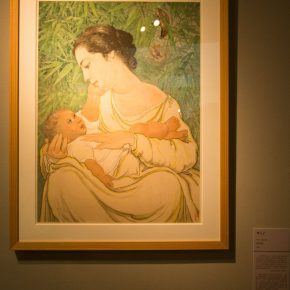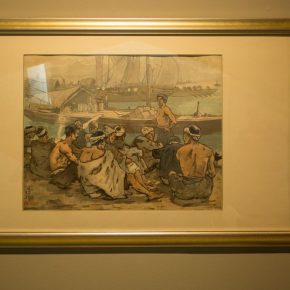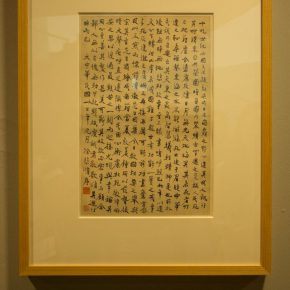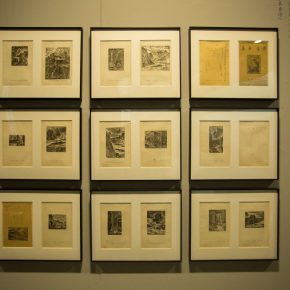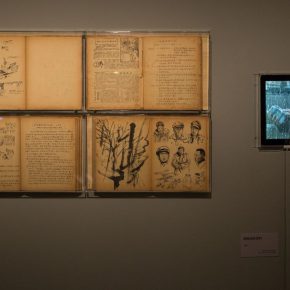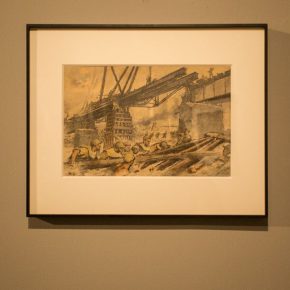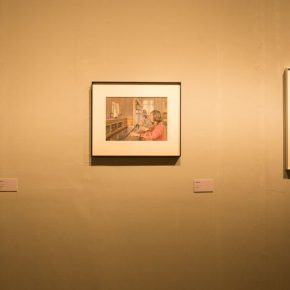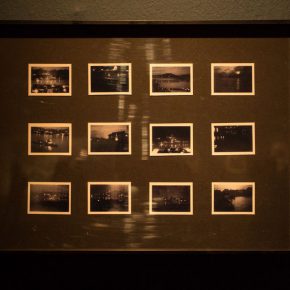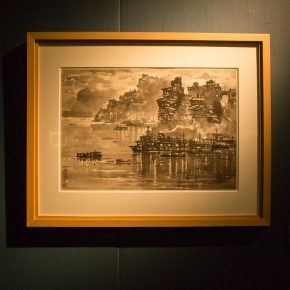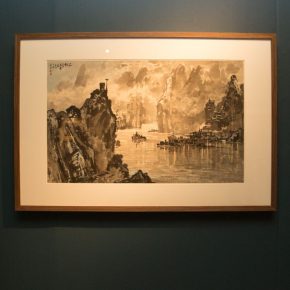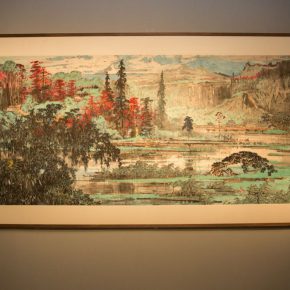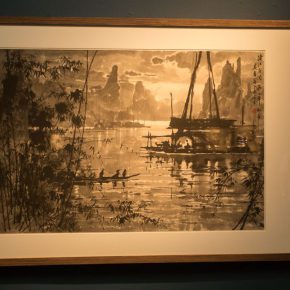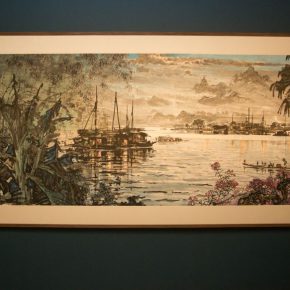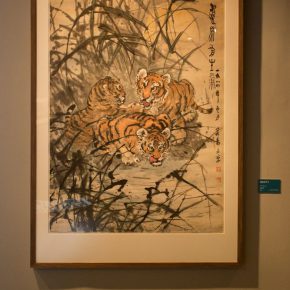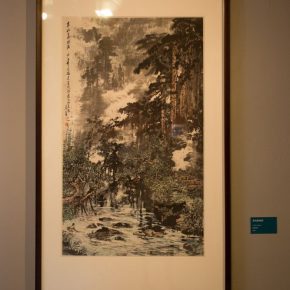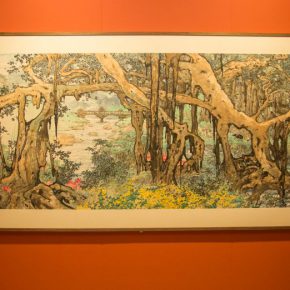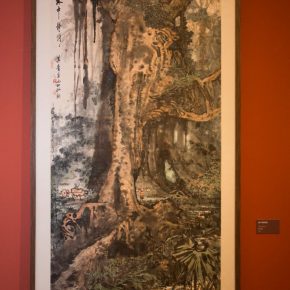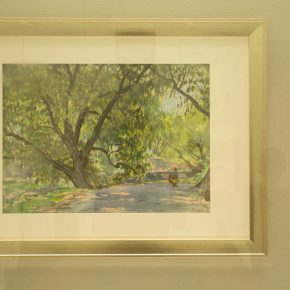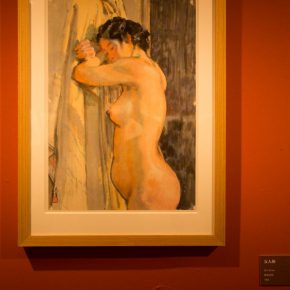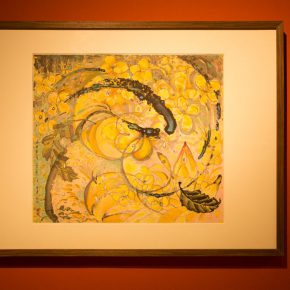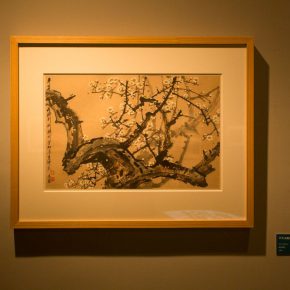
On June 27, 2017, hosted by CAFA “Harmonized Beauty” Exhibition Commemorating the 100th Anniversary of Zong Qixiang’s Birth opened at the CAFA Art Museum and this program received the Ministry of Culture’s “2017 National Art Collection Award and Financial Support”, while it is also part of CAFA “Hundred Years of Glory” series of events. The exhibition comprehensively showcases more than 130 works covering watercolor, sketches, woodcut and life stories, etc., which are divided into 3 parts, including “Concern about the People’s Livelihood, and Patriotism”, “The Use of Ink Color to Display the Brilliance of Night”, “The Land of Southern China Brought Late Splendor”, fully displaying Zong’s creative trajectory, independent quality and artistic ideals and investigating Zong Qixiang’s road towards art exploration.
Fan Di’an, President of CAFA, Vice President of the China Artists Association, Zhang Xiaoling, Vice President of the China National Academy of Painting, Su Xinping, Vice President of CAFA, Zhang Zikang, Director of CAFA Art Museum, Zong Qixiang’s wife Wu Pingmei, Prof. Jia Youfu from the School of Chinese Painting, CAFA, Chen Ping, Dean of the School of Chinese Painting, CAFA, Xu Qingping, Dean of Xu Beihong School of Arts at Renmin University of China, Xie Lin, Chairman of Guangxi Artists Association, Zhang Xinglai, Director of Jiangsu Provincial Art Museum, as well as senior artists such as Sheng Yang, Sun Weimin, Guo Yicong, Li Shusheng, Yang Xianrang, Pan Shixun, Jiang Caiping, Zhang Baowei, Wang Tongren, Jin Hongjun and Su Gaoli, and the teachers and students from CAFA attended the opening ceremony. Wang Shaojun, Deputy Party Secretary of CAFA hosted the opening ceremony.
Zong Qixiang is a representative of Chinese painting reformists of the 20th century. He was one of the first representatives who had succeeded in the use of Western painting to transform Chinese landscape painting, so that, Zong, together with Jiang Zhaohe, Li Keran and Li Hu were called the 4 masters of art reformists of the new China. Fan Di’an, President of CAFA delivered a speech at the opening ceremony and said that, “Zong Qixiang had been adhering to following Xu Beihong and was determined to follow the modern reform of Chinese painting in the 1940s, to pursue the road of fusion between China and the West. At the same time, he also inherited the feelings of Xu Beihong who was concerned with livelihood and society.
Considering the time as the longitude and taking the creative features of the artist of different periods as latitude, this retrospective is divided into three sections to retrospect Zong’s artistic exploration and the dimension of a formal style. Zong Qixiang was born in a poor family, so he shows empathy to the suffering of people with a tough life, “Concern about People’s Livelihood, and Patriotism” shows the works themed on mothers and children, as well as the life status of people at the bottom of society. In the 1940s, Zong Qixiang joined the “Wartime Work Cadre Training Group”, and then Zong started creations on military themes and battlefield sketches. After the liberation of Peking, he joined the People’s Liberation Army, and he was incorporated into the fine art group of the art and culture troupe at the Political Department for the 3rd Field Army, his battlefield sketches really record the ruins of the front line, and the tough military life, and these works link the art with the rise and decline of a nation, reflecting his patriotism. “The Use of Ink Color to Display the Brilliance of the Night” showcases Zong’s creations of landscape, flowers and birds, characters that blend China and the West, as well as his teaching on ideas and practices. Zong Qixiang followed Xu Beihong in his early year and started the exploration of the creation blending China and the West, and he created the “Landscape at Night” in the 1940s, which showcases the night view of Jialing River, breaking the restrictions of light in the traditional Chinese painting, Xu Beihong praised it saying that, “Zong Qixiang uses Guizhou native papers, together with the brush and ink for Chinese painting, to highlight the lights at night of Chongqing, with the uneven buildings, rugged mountains and street scenes, which stemmed from very simple brush and ink.” After the founding of new China, Zong continued to explore and study the night landscape painting, successively creating the Night View of the Three Gorges, the Night View of the Huangpu River, the Night View of Guangxi, the Night View of Lijiang River, the Night View of Wuhan, etc., opened up a new realm for the creation of Chinese landscape painting. In addition, he used brush and ink with the combination of the meticulous and freehand styles to describe the vegetation and wildlife, applying the coloring method of the exquisite brush and serious mound of the flower-and-bird painting in a freehand style, to form a feature with the “combination of China and the West”. “The Land of Southern China Brought Later Splendor” shows the elegant appearance of Zong Qixiang’s art of the later period, Zong went deep into in the border area in the southwest of China since the 1960s, and created a large number of vivid and fresh works in unique styles in the minority areas which were far away from the urban civilization. After the end of “Cultural Revolution”, he found his favorite local conditions and customs in Guangxi, created a large number of paintings to perform the landscapes and customs of the minority areas in Guangxi province. In addition, it also showcases Zong Qixiang’s innovative works of modernity, including his portrait paintings and a series of paintings of the human body with lights, which were created during his teaching in the academy, and they became the continuation of the Chinese & Western advantages integrated with Xu Beihong’s teaching system.
Taking this exhibition as an opportunity, Zong Qixiang’s families Wu Pingmei, Zong Xiaomei and Zong Haiping donated 38 works including a total of 707 pieces from the creations and collections of Zong Qixiang to CAFA, including Zong Qixiang’s representative works of various periods: “My Desk”, “The Intersection at Night”, “Mooring in the Town at Night”, “Autumn Scenery of the Southern China”, for the permanent collection of CAFA Art Museum. In addition, Zong Qixiang’s families also invest 1 million RMB to set up “Zong Qixiang Scholarship” to award outstanding postgraduate students in the field of Chinese painting.
It is part of CAFA “Hundred Years of Glory” series of events. CAFA has gone through nearly a century, and is about to usher in the 100th anniversary of the school next year, which is an important historical stage. CAFA attaches great importance to the researching and sifting through of outstanding academic traditions over the 100 years, and launches the “Hundred Years of Glory • Masters of CAFA” academic research program, with the establishment of a specialized office and it has held exhibitions commemorating the 100thanniversary of the birth of the artists and scholars including Dong Xiwen, Wang Xun, Luo Gongliu, Yan Han, Feng Fasi, Wen Jinyang, Tian Shiguang, as well as the 120th anniversary of the birth of Xu Beihong in recent years, to commemorate the outstanding artists and educators who had made contributions in the course over the 100 years of development of CAFA, inheriting and developing the artistic spirit and glorious traditions of the ancestors, to promote the innovation and development of the teaching of the academy as well as creation and research in the new situation.
The exhibition remains on view till August 27.
Text by Zhang Wenzhi, translated by Chen Peihua and edited by Sue/CAFA ART INFO
Photo by Hu Sichen/CAFA ART INFO



